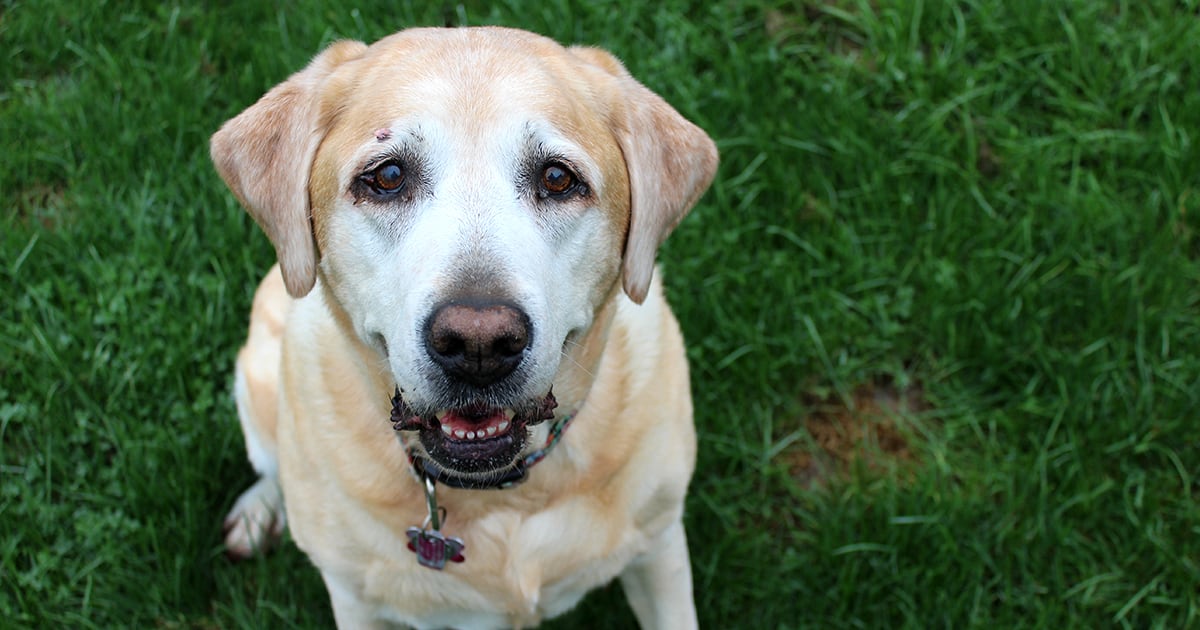Canine Lumps and Bumps: Sebaceous Cysts and Tumors

Dogs, especially as they age, can develop what some refer to as “old dog warts” on their skin. Most of these are actually benign (non-cancerous) growths, but any lumps that appear to be growing, changing shape or color, or are bothering your dog should be checked by your veterinarian to make sure they’re not something more serious.
Follicular cysts
Often called sebaceous cysts, these common lumps originate in the hair follicle (true sebaceous cysts originate from the sebaceous gland – but these are rare). Normally, the hair follicle releases an oily substance called sebum to lubricate the skin and help hair repel water. If the hair follicle becomes plugged, or is narrowed by trauma to the skin, the contents of the follicle form a cyst.
Typically, this will result in a solitary, round swelling under the skin that’s white or grey in color. Follicular cysts can rupture, emit a thick, white or brown waxy substance, and resolve on their own. Others simply become walled off.
These cysts are generally non-painful, and they can often be left alone if they’re not bothering your dog. Your veterinarian may want to take a fine-needle aspirate, to sample some of the cells from the cyst, to help determine the diagnosis. Follicular cysts can become infected, and if they’re bothering your dog, your veterinarian may recommend surgical removal.
Sebaceous gland tumors
Other wart-like masses can develop from abnormal skin cell growth, but they aren’t necessarily cancerous. While follicular cysts tend to be under the skin, nodular sebaceous hyperplasia is a raised growth with a cauliflower-like appearance. Although these masses look like warts, they aren’t caused by a virus like warts typically are.
Accounting for about half of sebaceous gland growths, sebaceous hyperplasia is common in older dogs and breeds such as cocker spaniels, poodles, schnauzers and dachshunds. The growths may be pink or pigmented, are often hairless, and may produce a greasy or waxy substance. Dogs may have a single growth, but it’s more common to see multiple growths, mostly on the face, legs and trunk.
To the naked eye, sebaceous epitheliomas look just like nodular sebaceous hyperplasia, but they tend to occur on the eyelids and head. These growths account for about 37 percent of sebaceous gland growths. Sebaceous adenomas can also have a similar appearance, and they make up about 8 percent of sebaceous gland tumors.
Because these masses typically aren’t malignant and are more of a cosmetic issue, they usually don’t need treatment. However, about 2 percent of sebaceous gland masses can be malignant sebaceous carcinomas. So it’s important to have your veterinarian examine any new or changing skin lumps on your dog. Typically, a fine-needle aspirate or biopsy (skin sample) will be needed to definitively identify the growth.
The good news is, most of these “old dog warts” are benign and are generally nothing to worry about. Some of these growths can occasionally be traumatized during grooming and ooze blood.
Any mass that bothers the dog or continues to bleed should be examined by a veterinarian.
